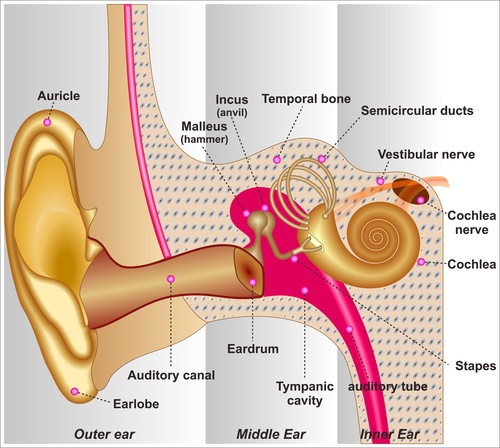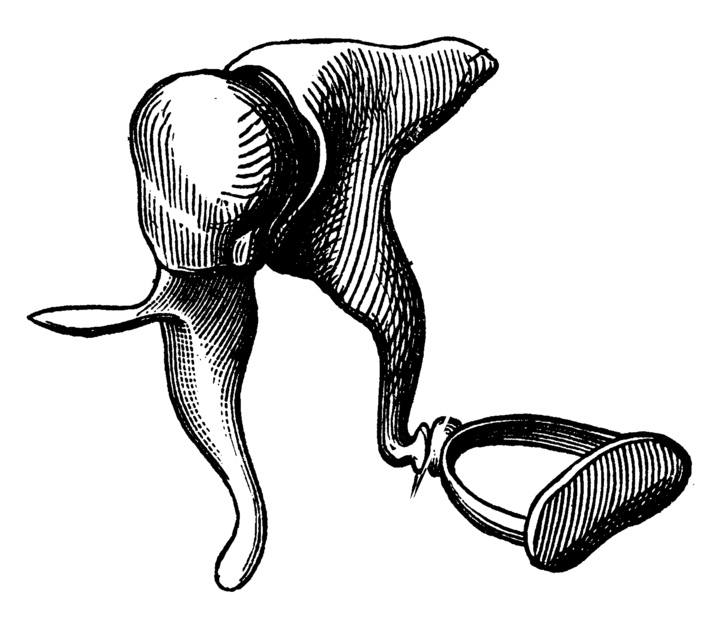Ossicle or Ossiculum…. Little bone.

The stapes is the smallest bone in the body, pronounced stay-peas. Latin for stirrup, it really does look like one.
This bone is one of three known as the ossicles or auditory ossicles. The Malleus (hammer), incus (anvil) and stapes. These three bones make up the middle ear. In addition, two middle ear muscles modulate the way sound vibrations are transmitted.

The stapedius (said to be the smallest skeletal muscle in the body) and the tensor tympani; these muscles act like a very sophisticated home theatre system to attenuate the sound along the ossicular chain. Acoustic stimuli are mainly from the stapedius. The tensor tympani muscle can contract when we swallow and stimulate the tongue. Facial stroking and self-vocalisation are also known to produce a response. The tensor tympani has attachments to the greater wing of the sphenoid, the petrous part of the temporal bone, malleus and eustachian tube. It is innervated by the nerve to the medial pterygoid. A study conducted in 2018 (Microsurgical Anatomy of Stapedius Muscle https://doi.org/10.1007/s12070-018-1510-5) describes; that the origin of stapedius is from the fasciculi of the posterior belly of the digastric muscle, which is then inserted in the mastoid groove. Then the fasciculi pass through the stylomastoid foramen and approach the stapes neck to form the stapedius muscle; it also gives fibres to the tympanic cavity.
Clinical relevance – tinnitus and sudden hearing loss have been linked to temporomandibular joint problems.
Impact of Temporomandibular Joint Complaints on Tinnitus-Related Distress – https://doi.org/10.3389/fnins.2019.00879 – study support the need for involving dental care in the holistic treatment of patients.
Otological manifestation of temporomandibular joint disorder in Ekiti, a sub-Saharan African country – https://doi.org/10.1177/0300060521996517 – Patients presented with earache as one symptom. Unilateral TMJ disorder accounted for 98.5 of all disorders.
Temporomandibular Joint Disorders as a Cause of Aural Fullness – https://doi.org/10.21053/ceo2016.01039 – TMD treatments are successful against aural fullness (often described by people as stuffy ears). 90.2% showed the disappearance of or significant improvement in symptoms. No surprise that massage was the most effective treatment in the muscle disorder group.
